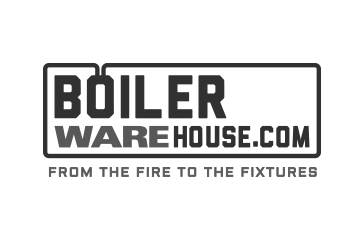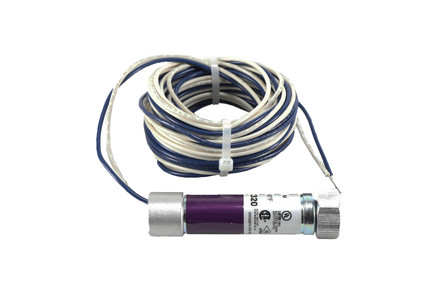Flame Safeguard Controls
The Flame Safeguard is an industry term used to define the safety controller that operates your burner. It is a carefully designed burner control that follows a set series of functions to make sure your burner operates safely. The controllers come in many different brands like Honeywell, Fireye, Autoflame, and more.
If you do not see the part you want below, feel free to use the chat function and see if we possibly have the part you are looking for in stock.

Flame Safeguard Controls Categories
Manufacturers View all
Most Popular
-

Honeywell
0/215F UV Mini Peeper Flame Scanner
- SKU:
- C7027A1056
What Are Flame Safeguard Controls & What Is Their Function?
Flame Safeguard Controls monitor burner flames
Flame safeguards comprise all of the safety equipment in a boiler’s gas train and fire side that monitor and confirm proper combustion at the burner, and control the fuel supply as needed. Together, they keep the boiler operating safely and efficiently.
Flame Safeguard Controls confirms correct combustion
Whether you’re talking oil or fuel gas, boiler fuel is volatile. That means that the boiler’s fire side has to be carefully monitored to make sure that the burners start safely, maintain their flame, and extinguish when the fuel supply is cut off.
There are several pieces of equipment that work together to accomplish this.
Flame Scanners are designed to detect specific wavelengths of light, and convert any detected light into a weak electrical current.
Amplifiers power the flame scanners and amplify the sensor signal to be readable by the boiler’s control system.
Controllers monitor the incoming signals from the amplifier, and use them to confirm proper burner firing. They then adjust the burner accordingly, to either increase, decrease, or extinguish the flame.
Servo Motors are actuated by signals from the boiler controller, making adjustments to the burner’s valve position and fuel supply to as needed during startup, regular operation, and shutdown.
Gas Pressure Sensors confirm that fuel is flowing at the correct pressure during every stage of boiler operation.
Purge Timers and Programmer Modules are circuit boards installed into the boiler’s control system that control the parameters of the combustion cycle, including the amount of time a boiler’s purge cycle stays on.
The Role Flame Safeguard Controls Play In A Boiler
Fuel should never be introduced into a boiler unless there’s a sustained flame to consume it, or an ignition spark to light it. By detecting the light and/or heat emitted by the boiler’s flame, the flame safeguard controls confirm proper combustion, preventing unburned fuel from building up and creating an explosion hazard.
Flame safeguard controls also confirm that the burner shuts down when it’s supposed to.
What Are The Effects Of Flame Safeguard Controls?
If any part of a flame safeguard control fails, the burner will not be monitored and controlled properly. This will cause a change in boiler performance elsewhere in the system, such as increased temperatures or lost steam production. Though most systems include automatic checks of all electronic equipment, visual verification of combustion is always a safe practice.
Things To Consider About Flame Safeguard Controls:
- Regular flame safeguard control cleaning and calibration are required for proper operation.
- Make sure your flame scanners are kept clean, because any distortion by soot or residue may cause inaccurate readings or false negatives.
- Make sure your flame safeguard control system is set up with compatible, properly calibrated components.
- Many controllers can use more than one type of flame scanner, so be sure yours is set correctly.
Helpful Resources
Relevant WARE Videos on Flame Safeguard Controls
How to Check the Scanner - Pilot Problems Part 7
IR vs UV Boiler Flame Scanners and How They Work
Flame Safeguard Operations Part 2
Learn about one of the best ways to keep your boiler safe
Cleaning the Burner's Flame Sensor
Explore over 750+ explanatory videos on boilers and boiler systems on our Youtube channel. Our videos can help you quickly grasp complex boiler topics. Watch more here!
Relevant WARE Blog Articles on Flame Safeguard Controls
Cleaning the Burner's Flame Sensor
A Quick Scan of Flame Scanners
Autoflame Leads The Way in Boiler Combustion Management Controls
Our informative and educational blog content can help you gain a deeper understanding of the boiler room. Read more here!
Technical Documents
Flame Safeguard Controls FAQ
How do flame scanners detect a flame?
Flame safeguards use two main types of technology to confirm the presence or absence of a flame. Infrared detection, and ultraviolet light detection.
How do you clean a flame scanner?
Flame scanners are fairly easy to clean. Once the boiler has been shut off and allowed to cool to a safe level, the flame scanner housing can be unbolted from the furnace. Then, is usually just a matter of wiping the soot and residue off with a clean, soft cloth. After cleaning, confirm proper installation and operation before firing the burner again.
Why do purge timers come in different time lengths?
The larger the boiler, the more heat is required to make steam. The more heat, the larger the fire side. The larger the fire side, the longer the purge cycle will have to last to ensure that all unburned fuel and combustion gases are removed and vented out of the stack.










